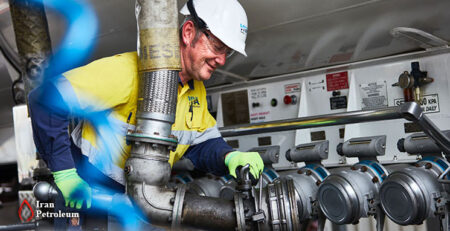Daily Iran gas consumption to Hit 650 mcm
Iran gas consumption in the domestic and commercial sectors is predicted to reach 650 million cubic meters per day in the first month of winter (Dec. 22, 2022-Jan. 20, 2023), the head of the state-run National Iranian Gas Company’s Dispatching Department said.
“Currently, an average of 600 mcm of gas are consumed daily in the domestic and commercial sectors. According to the forecast of Iran Meteorological Organization, the temperature will decrease in January, which will lead to the rise in gas consumption by households, offices and businesses that use the fuel for heating purposes,” Mohammad Reza Joulaei was also quoted as saying by IRNA.
“The current gas consumption has increased by 60 mcm per day compared with the same period of last year,” he added.
The official noted that despite the rise in fuel use in all sectors, including households, commercials, industries and power plants, the condition of gas supply is quite appropriate and the gas pressure is stable in all regions.
The increase gas output
“Currently, 977 mcm of gas are extracted per day and 843 mcm are injected into the country’s national grid,” Joulaei said, adding that the latter has increased by 20 mcm per day compared to the same period of last year.
The increase is due to the rise in the gas output of the huge South Pars gas field, which has reached a record 705 mcm/d.
South Pars has 24 phases, all of which (except Phase 11) are now operational. The field, which Iran shares with Qatar, covers 9,700 square kilometers, 3,700 square kilometers of which (South Pars) are in Iran’s territorial waters. The remaining 6,000 square kilometers, called North Dome, are situated in Qatar’s territorial waters.
The field is estimated to contain a significant amount of natural gas, accounting for about 8% of the world’s reserves, and approximately 18 billion barrels of condensate.
Liquid Fuel Use
Although more gas (15 mcm/d) was supplied to power plants and industries early in the fall compared with the same period of last year, due to the decline in temperature in recent weeks and the priority of domestic sector for gas supply, gas delivery to some power plants and industries has been cut and they have been forced to use liquid fuel such as mazut instead, which are not eco-friendly and contribute to air pollution.
Over the years, the use of liquid fuel in winter, along with temperature inversion, has had a serious negative impact on air pollution.
Air pollution has posed a challenge in the country for years, as some power stations and industries still burn mazut to continue production.
Mazut is a heavy, low quality fuel oil used as an alternative to run thermal power plants and factories. It is not suitable for power plants because it doubles maintenance costs, increases water consumption and decreases output.
Most thermal power plants run on natural gas, as liquefied fuels have long-term adverse effects. The use of diesel and mazut in power plants and other industries increases greenhouse gas emissions.
As more liquid fuel is burnt, higher volumes of toxic fumes are released into the atmosphere, making a bad pollution worse.
When power plants do not receive adequate gas, they need to either reduce output or burn liquid fuel to avoid outages in regions under their electricity coverage.
Natural gas comprises more than 83% of fuel for power plants in Iran. This is while the figure is 23% globally. There is also a 4% annual growth in gas consumption in the power plants iran.
Published: Dec 16, 2022
If you want to order petroleum, petrochemical and chemical products from Iran, please do not hesitate to send Iran Petroleum an email.












Leave a Reply